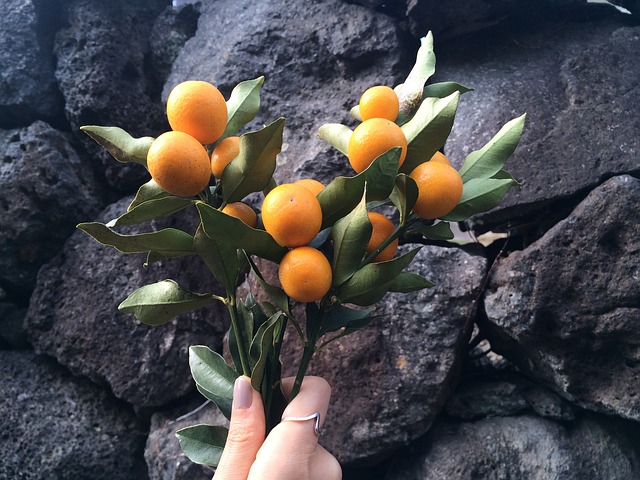Kumquat: Origins - Consumption - Nutrition Facts - Health Benefits
|
|
|
Contents
- Geographic origin and regions grown
- Common consumption today
- Nutrition Facts: Vitamins, minerals and phytochemical components
- Health Benefits: Medicinal uses based on scientific studies
- Bibliography
Geographic Origins and Regions Grown

Here’s a favorite with the family: kumquats. They look like tiny little oranges at less than 2 inches in length. Discovered in China, they were brought to Japan, Europe, then finally to North America in the late 1840’s.
Common Consumption Today
I was hesitant the first time I tried one and was amazed that the package recommended eating them whole, skin and all. The kumquat has an acid or sweet flavor and can be consumed as marmalade or even raw.
As the rind is sweet and the juicy center is sour, the raw fruit is usually consumed either whole, to savor the contrast, or only the rind is eaten. The fruit is considered ripe when it reaches a yellowish-orange stage, and has just shed the last tint of green.

With a sweeter rind in comparison to other citrus fruits, the kumquat is great for candy or preserves. On the market they are offered for sale as a beverage garnish in place of the olive. When sliced they enhance salads and other dishes. If macerated, a kumquat liqueur can be produced. Try using vodka or another clear spirit.
The Cantonese have a traditional recipe to preserve kumquats. A batch of kumquats is buried inside a glass jar with dry salt. In time, the juice is extracted into the salt leaving behind shrunken, discolored kumquats. The salty juice left behind is a nice brine with a lengthy shelf life of a few years. Mix with hot water to fix up a sore throat.
Nutrition Facts: Vitamins, Minerals and Phytochemical Components
Kumquats are free of sodium, fat and cholesterol and is known to be a great provider of vitamins A and C and fiber. Iron and calcium can be found in kumquats. For anyone that is on a diet, around eight kumquats will have 100 calories. That would be a good cup of fruit to snack on.

Health Benefits: Medicinal Uses Based on Scientific Studies
Kumquats are helpful in with the aiding of laryngitis, a cold, a fever, bronchitis, disorders related to the spleen, sore throat, and diarrhea (1).
Leaves from kumquats have oil that produce organic acids and sugars. The kumquat is an expectorant (1), which means it can treat sore throats. Also, kumquats are medically rumored to treat fevers, addiction to alcohol, flatulence, and also to act as a deodorant and stimulant.
Bibliography
1. Akinleye, M. O., Coker, H. A., Chukwuani, C. M., & Adeoye, A. W. (2007). Effect of Five Alive fruit juice on the dissolution and absorption profiles of ciprofloxacin. Nigerian Quarterly Journal of Hospital Medicine, 17(1), 53-57.
Disclaimer
Nutritiousfruit.com provides this website as a service. Although the information contained within the website is periodically updated, no guarantee is given that the information provided is correct, complete, and/or up-to-date. The materials contained on this website are provided for general information purposes only and do not constitute legal or other professional advice on any subject matter. Nutrtiousfruit.com does not accept any responsibility for any loss, which may arise from reliance on information contained on this website. The information and references in this website are intended solely for the general information for the reader. The content of this website are not intended to offer personal medical advice, diagnose health problems or to be used for treatment purposes. It is not a substitute for medical care provided by a licensed and qualified health professional. Please consult your health care provider for any advice on medications.
Didn't find what you were looking for? Search here...

Amazon Search Box:
Did you like this page?
|
|
|




